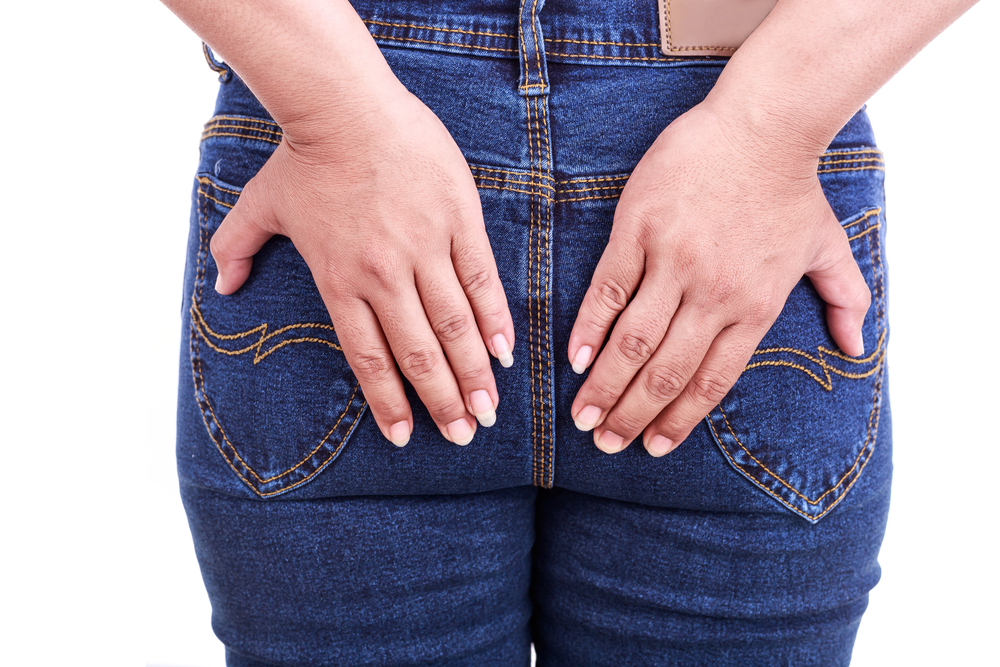Irritable and itchy anal cavity, trouble passing stools, bloody stools, and discomfort when you sit for a long time? Chances are you may have experienced these conditions at some point in time in your life.
You’re not alone!
Almost half of the population suffers from piles or fissures. Not even children are spared the horror of it. However, many of us often fail to understand the fundamental difference between piles and fissures.
Since both have similar symptoms, let’s understand what is the difference between piles and fissures, and how they can be remedied.
Table of Contents
Difference between Piles and Fissures
Inflamed veins in the rectal or anal region, sometimes extend out and produce extreme agony. These conditions are called piles or hemorrhoids (bawaseer).
An anal fissure, on the other hand, is a tiny cut in the anal cavity’s lining.
Piles Vs. Fissures
| Piles | Fissures |
| Swollen veins in the anal canal/colon/anus | Tear/cut in the anal skin |
| Painless in the early phase, with increasing pain as the swelling becomes prominent | Very painful or uncomfortable with a little bleeding |
| Occur due to prolonged constipation, pregnancy, chronic cough, physical strain | Occur during pregnancy, due to obesity, an injury to the anus region, passing hard stools, chronic diarrhea |
Is Piles/Fissures and Fistula the Same Thing?
Now, you know the basic difference between piles and fissures. People have a misconception that a fistula is the same thing as piles or an anal fissure. That is not correct.
An anal fistula is a tiny tunnel that runs from an infected gland inside the anus to a skin hole around the anus. Several tiny glands that produce mucus are located just inside the anus.
These glands can occasionally become clogged and infected, resulting in an abscess. Almost half of these abscesses turn into a fistula.
How to Identify an Anal Fistula?
Anal fistulas can cause symptoms such as soreness, redness, and swelling around the anus. Bleeding, unpleasant bowel movements, and fever are all possible signs that you might have an anal fistula.
Pain in Anus Hole: Home Remedies
Studies show that piles, fissures, and fistula are anorectal diseases that require surgery in severe cases. Although, non-operative management is effective, and you can try home remedies to get better.
Piles, fissures, and fistula represent pain in the anus hole. It’s essential to take care of yourself to prevent these diseases in the first place. Some of the basic hygienic measures and home remedies are as follows:
Develop Healthy Eating Habits
Diets that prevent constipation or diarrhea are best suitable to avoid piles, fissures, and fistula.
Usually, fiber-rich foods serve this purpose. Fibers help a lot in controlling anal diseases and pain in the anus. It’s because fiber-rich foods add volume to the stools and help expel them easily from your body. These foods also clean your colon and prevent constipation.
You must add fiber-rich foods such as whole grains, vegetables, and fruits. They are rich in vitamins and minerals that boost immunity and heal infections faster.
Including healthy fats in your diet is a must. If you take cold-pressed oil or clarified butter in moderate amounts, you get better absorption of nutrients. This, in turn, helps in a smooth bowel movement.
There is a richness of omega-3 and omega-6 fatty acids in fish, olives, and nuts. They help strengthen your immune system and decrease the levels of inflammation from piles or fissures.
Avoid Unhealthy Eating Habits
To prevent indigestion and diarrhea, avoid large and heavy meals. You must stop eating spicy and hot foods as they can aggravate bleeding and irritation in the anal region.
If you have a habit of consuming coffee/tea, your system can dehydrate and constipation gets worse. So avoid coffee, sugary, refined, and fried foods as they harm the intestinal function, and the risk of piles and fissures increases.
Go On, Get Your Fill of Water
Drinking enough water is one of the finest home remedies for anal diseases. A decent substitute for carbonated beverages and alcohol is to drink a lot of water and fruit juice.
Bowel clearance can be aided by ginger tea, turmeric milk, cabbage juice, orange juice, or gooseberry extracts. Read more about the benefits of ginger, as it’s not your usual spice.
Excess water softens waste and aids in the cleaning of the intestines, preventing constipation and strain on the fistula.
Maintain Healthy and Hygienic Bowel Habits
Toilet cleanliness and healthy bowel habits can help prevent the transmission of infection. Clean the anal region thoroughly after each bowel movement or visit to the toilet.
Hands must be kept clean because they are the ones that are exposed to the most pathogens.
Underwear should be replaced as needed if there is bleeding due to piles or fissures.
Take a Sitz Bath Once in a While!!
A sitz bath involves soaking the anal area in plain warm water. It is one of the greatest ways to relieve the symptoms of an anal fissure or piles e.g, irritation, edema, pain, and inflammation.
Take a sitz bath 3-4 times a week. It can be relaxing and relieving.
Use a Donut Pillow
Use a donut pillow, if sitting for long times becomes unbearable for you. This will avoid pressure on the anal area and relieve pain while sitting.
Takeaway!!!
You have clearly understood the difference between piles and fissures. Rectal bleeding is the most noticeable symptom of piles, fissures, or fistula. Don’t ever ignore such a condition when you notice one in your body. It can lead to unexpected outcomes.
These anal diseases are very common. A lot of people are facing similar problems as you are. Don’t be embarrassed to ask for help. It’s just around the corner.
Consult a well-known gastroenterologist for your anal fissure checkup and treatment. Book an appointment via Healthwire.pk or call at (042) 32500989.
